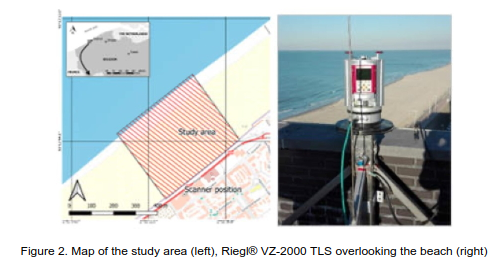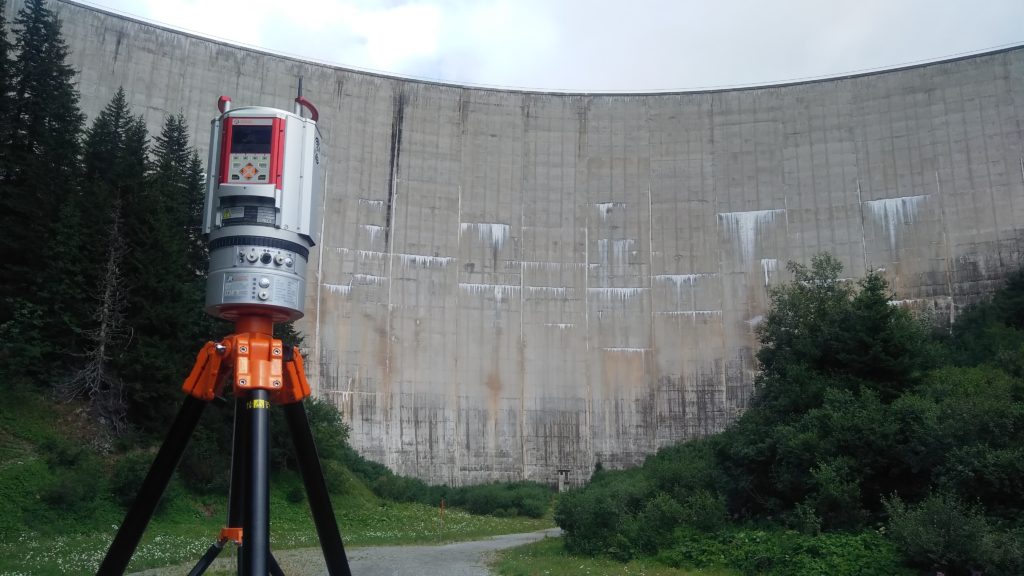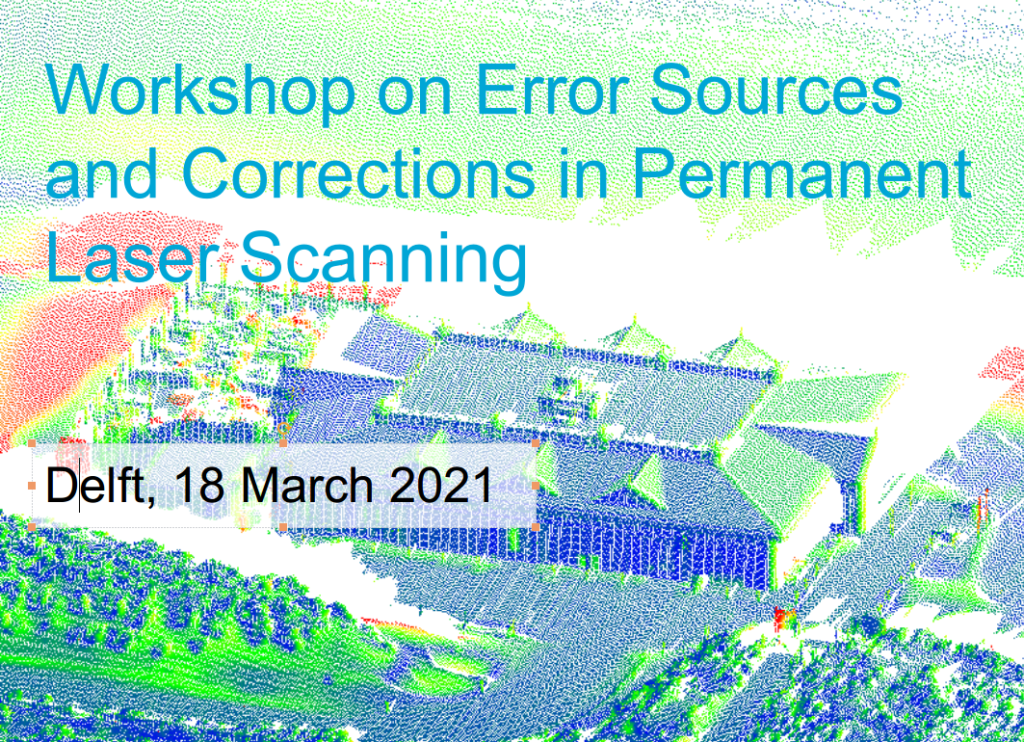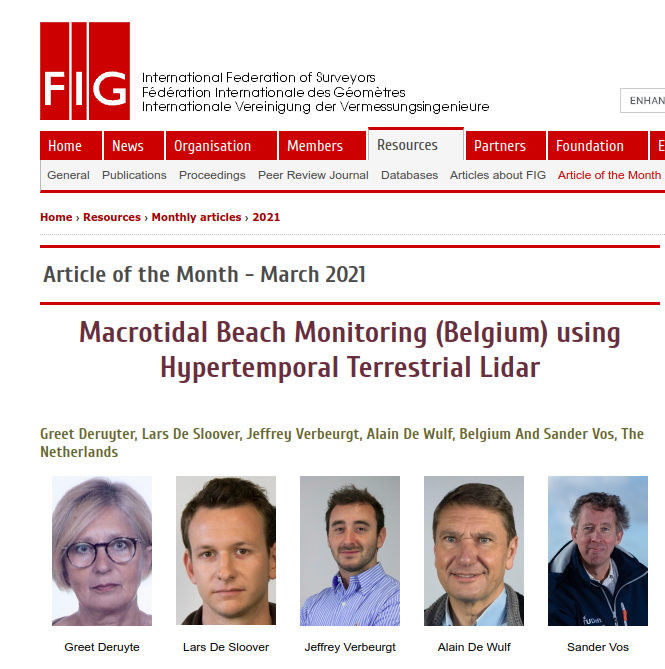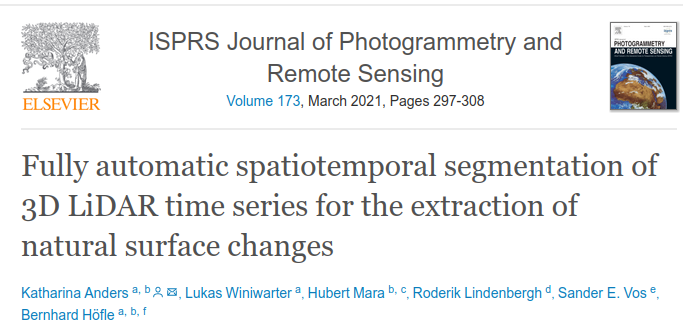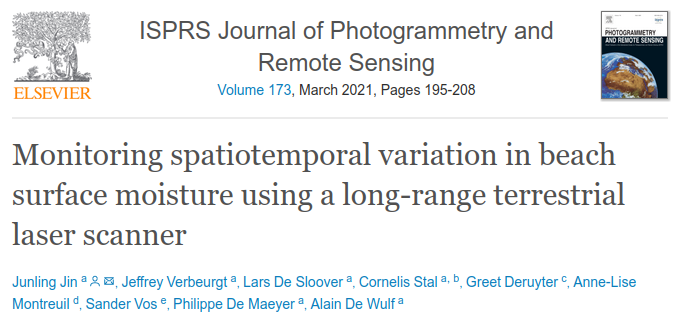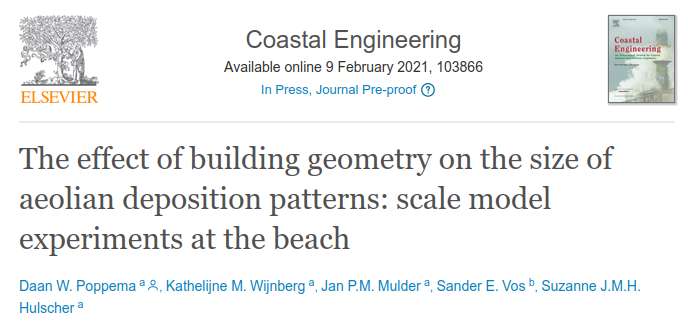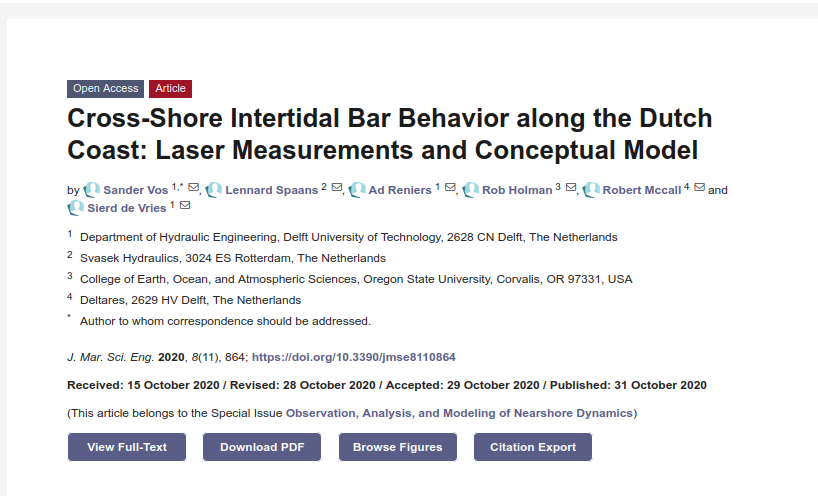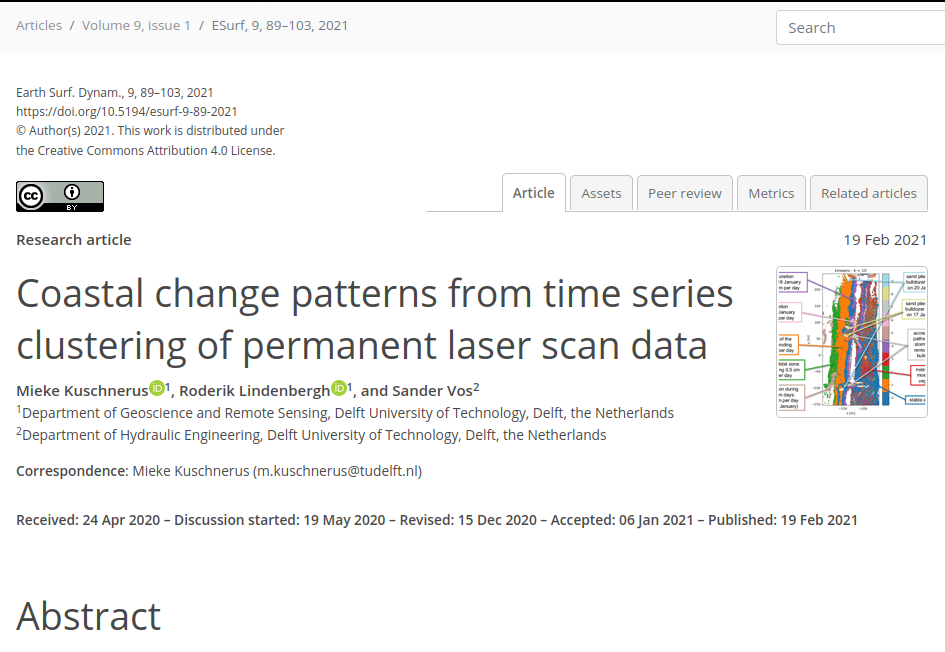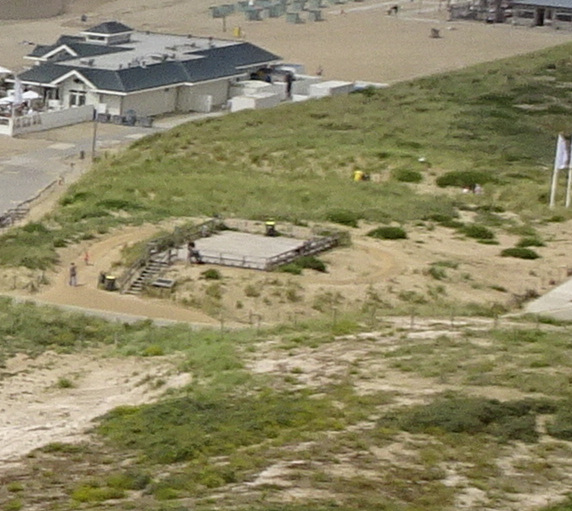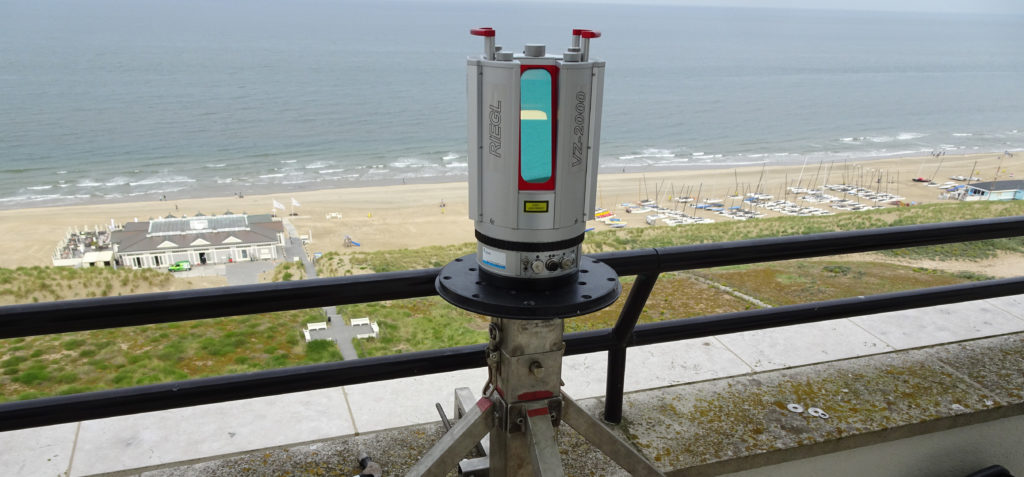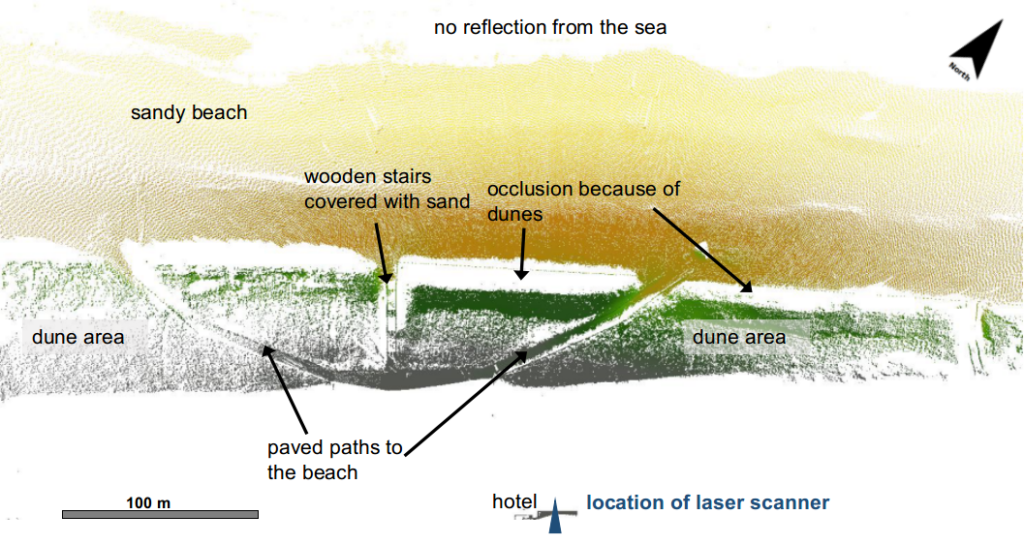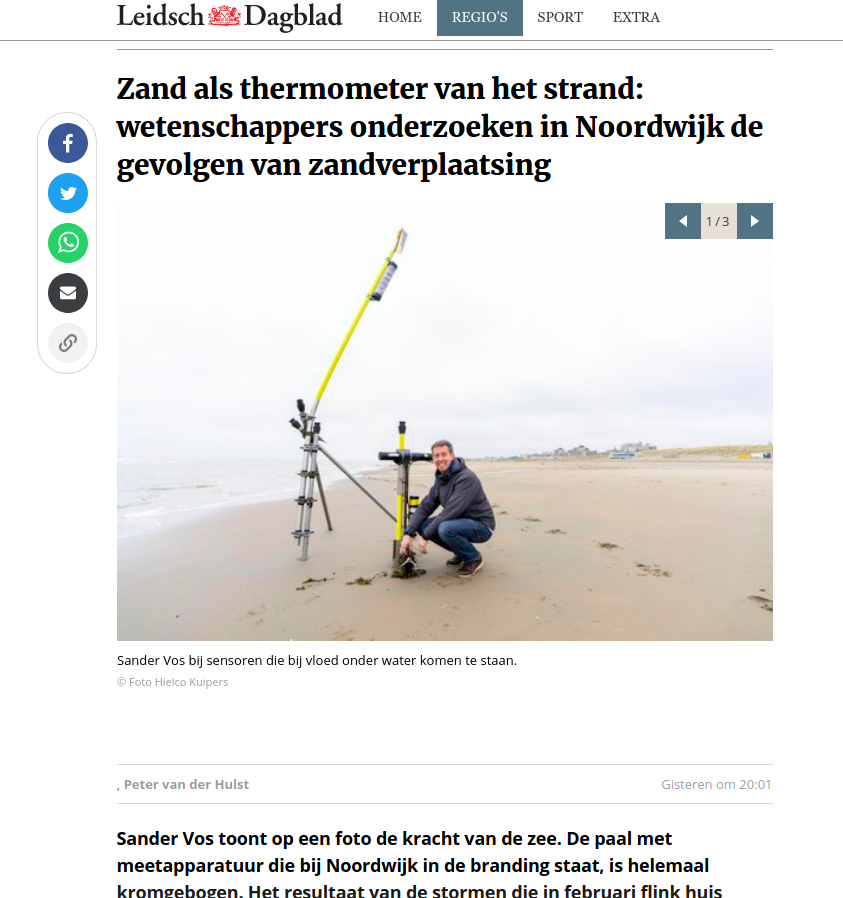In February 2021 Y. Schreijer successfully completed her master thesis with the title: ‘Visual insight into the temporal changes of sand patterns along the Dutch coast’ under the supervision of E. Verbree and P. van Oosterom (TU Delft) and P. Goessen (Hoogheemraadschap Hollands Noorderkwartier). For her master project she used CoastScan data to visualize dynamics that influence deformation processes of the coast.
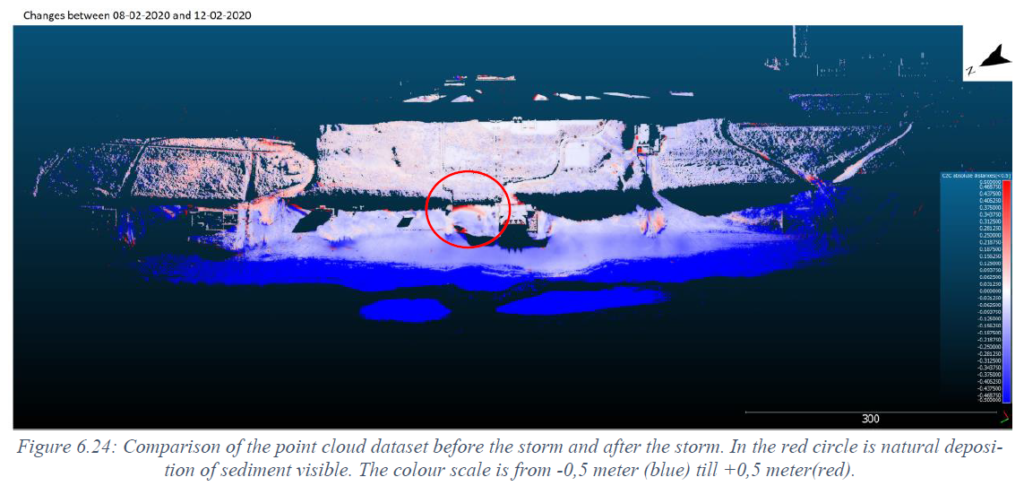
The image shows elevation differences in Noordwijk after a storm hit the coast in early February 2020. A large sand deposition is circled in red.

In a comparison between two consecutive scans (about one hour apart) moving sand ripples, possibly caused by aeolian sand transport due to strong winds, are made visible.

